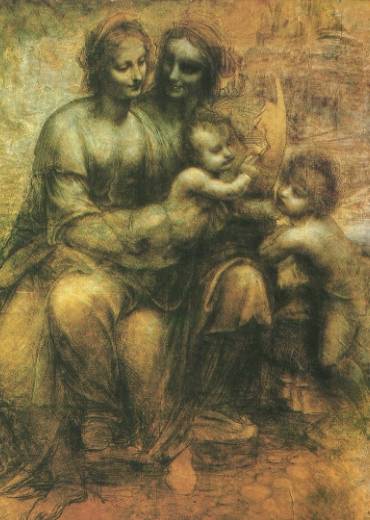Instructions for Side by Side Printing
- Print the notecards
- Fold each page in half along the solid vertical line
- Cut out the notecards by cutting along each horizontal dotted line
- Optional: Glue, tape or staple the ends of each notecard together
Art Appreciation: Chapters 9 & 11 Test Preparation
front 1  Who drew "Banana Flower"? | back 1 Georgia O'Keeffe |
front 2  Winslow Homer's 'A Wall, Nassau" was made using | back 2 watercolor washes. |
front 3  Leonardo da Vinci made a drawing, "Madonna and Child with St. Anne and Infant St. John the Baptist," for a fresco of the same title. This type of drawing is called | back 3 a cartoon. |
front 4 Buon fresco painting can be described as | back 4 working with pigment directly into fresh plaster. |
front 5 A popular drawing medium during the Renaissance consisted of a stylus of gold, silver, or other metal that was dragged across a prepared ground of lead white, bone, and water. This process was called | back 5 metalpoint. |
front 6 What is the binder in "encaustic" painting? | back 6 wax |
front 7 When an artist paints with a mixture of watercolor pigment and Chinese white chalk, the process is called | back 7 gouache. |
front 8 A traditional ground for tempera paintings, which consists of a mixture of glue and plaster of Paris or chalk, is | back 8 gesso. |
front 9 When ink is diluted with water and applied in broad flat areas, the result is called a | back 9 wash. |
front 10 The painting process that allows for a continuous blending of tones and hues on the painting surface is called | back 10 oil painting. |
front 11 What is the difference between buon fresco and fresco secco? | back 11 In buon fresco, the pigment is applied to a wet wall whereas in fresco secco, the pigment is applied to a dry wall. |